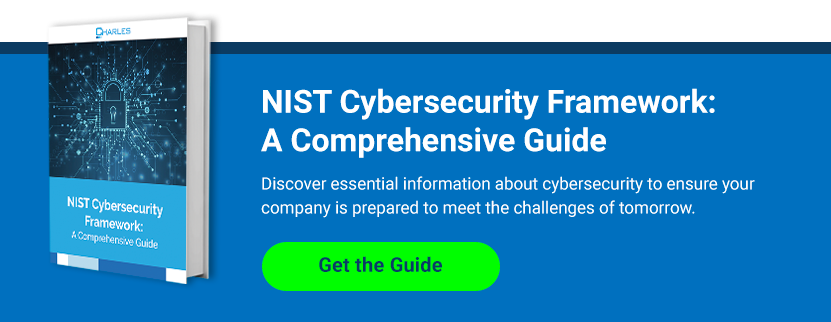Organizations of all types and sizes face unrelenting threats from malicious actors, including organized cybercrime, corporate espionage, and state-sponsored attackers. Every business owes it to themselves, their stakeholders, and their customers to take a proactive stance to IT security and risk-management, which is why the NIST Cybersecurity Framework has been adopted globally as the gold standard for information security.
The NIST CSF explained
While the NIST Cybersecurity Framework was originally developed with critical infrastructure in mind, it is versatile enough that it is relevant to all organizations, regardless of their industry, size, and current security maturity level. Compliance with NIST is even mandated in specific cases and verticals, such as for defense contractors.
The latest version of the framework was updated to reflect the most pertinent challenges facing security leaders today. It encompasses six control areas in total – governance, identification, protection, detection, response, and recovery. Its purpose is to establish a baseline of best practices in the world of risk-management and IT security and to help business leaders develop a complete process for dealing with the lifecycle of any given cyberthreat or other incident.
Here are some reasons why the NIST Cybersecurity Framework is essential to your business:
#1. Achieve superior cybersecurity
Since the NIST Cybersecurity Framework was developed for the critical infrastructure sector, it adheres to the very highest standards of cybersecurity. This is why it became the standard in the defense sector, as well as all other industries that routinely handle highly sensitive data. Indeed, various NIST special publications serve as the basis for compliance regimes, such as CMMC and DFARS.
The framework is the product of many years of research and numerous leading authorities in the information security sector. To that end, it harnesses the wisdom and experience of the crowd, which is especially important now that technology is everywhere and the threat against it has become increasingly complex as well. This means the framework addresses common oversights and helps business leaders to understand all perspectives on security.
#2. Attract high-value customers
For many years, business leaders have widely viewed information security as a necessary but costly evil. This way of thinking needs to change, not least because attaining a high degree of security is now a major part of the value proposition. In sectors like defense, healthcare, and legal, a brand’s reputation depends heavily on the organization’s ability to protect its clients’ sensitive data.
Compliance with the NIST Cybersecurity Framework has a ripple effect across supply chains to the point that it makes your organization more attractive to potential suppliers, customers, and investors. In fact, in the B2B sector, clients will often ask outright where potential vendors are in their adoption of the framework. The response to that question can make or break the deal, so NIST compliance simply makes sense from a financial perspective too.
#3. Achieve security alignment
Information security has long existed in a bubble, where it is solely seen as the responsibility of the IT security department. At the same time, business leaders traditionally think primarily about business growth from a financial perspective. As such, there has long been a disconnect between the demands of cybersecurity and broader business goals and priorities. The truth is that cybersecurity is everyone’s responsibility, and business success depends on it.
The NIST Cybersecurity Framework aims to correct this old way of thinking by addressing the needs of risk-management and alignment with business needs. These are clearly things that corporate executives understand very well, which means that security budgets can be better justified and allocated accordingly. It also aims to improve communications between technical and business stakeholders.
How to use the NIST Cybersecurity Framework
Implementing the NIST Cybersecurity Framework should be approached as a marathon rather than a sprint and a journey rather than a destination. Cybersecurity is a constantly evolving field, which is why it makes sense to have the right technical partners to regularly review and guide you through your organization’s security maturity. That being said, executives would do well to familiarize themselves with the main control areas of the framework before seeking expert guidance on how to implement them. After all, there is far more to the framework than just a list of best practices that need to be applied.
Charles IT provides the full range of services that businesses need to become fully compliant with the NIST Cybersecurity Framework. Get in touch today to schedule your first consultation!
This blog was updated in October 2024 for accuracy.




